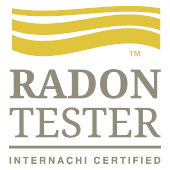Painesville Radon Page
The Risks of Living With Radon
Radon gas decays into radioactive particles that can get trapped in your lungs when you breathe. As they break down further, these particles release small bursts of energy. They can damage lung tissue and lead to lung cancer over the course of your lifetime. Not everyone exposed to elevated levels of radon will develop lung cancer. And the amount of time between exposure and the onset of the disease may be many years.
Smoking combined with radon is an especially serious health risk. Stopping smoking and reducing the levels of radon in your home can reduce your risk of getting lung cancer.
Children have been reported to have greater risks than adults of certain types of cancer from radiation.
Your chances of getting lung cancer from radon depend mostly on :
*How much radon is in your home
*The amount of time you spend in your home
*Whether you are a smoker or not.
Radon is the second leading cause of lung cancer in the United States, only cigarette smoking is higher. Radon contributes to over 21,000 deaths per year.
Radon in Water
There are two main sources for the radon in your home's indoor air, the soil and the water supply. Compared to radon entering your home through water, radon entering your home through the soil is usually a much larger risk. The radon in your water supply poses an inhalation risk and an ingestion risk. Research has shown that your risk of lung cancer from breathing radon in air is much larger than your risk of stomach cancer from swallowing water with radon in it. Most of your risk from radon in water comes from radon released into the air when water is used for showering and other household purposes.
Where is Radon Found
Elevated amounts of radon has been found in every state, including Ohio. It can get into any type of building -homes, offices, and schools- and result in a high indoor radon level. But you and your family are most likely to get your greatest exposure at home, where you spend most of your time. Testing is the only way to know if you and your family are at risk from radon. The EPA and the Surgeon General recommend testing all homes below the third floor for radon.






